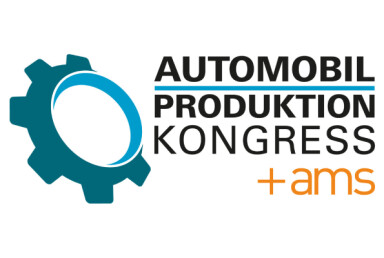Analysis: China Gains On UK
BYD’s 880% UK surge exposes gaps in the region’s EV strategy

BYD’s record UK sales in September, despite being shut out of subsidy schemes, underline a wider reckoning for UK auto manufacturing strategy. An industry built on incentives and protection needs fresh foundations in design, export and resilience.
The strategic reckoning for automotive incumbents across Europe is now immediate and unavoidable. The rapid penetration of the British EV market by Chinese OEMs, seeming impervious to policy-driven protectionism, reveals a critical structural vulnerability: the systemic failure of domestic subsidy regimes when faced with superior global manufacturing scale and leverage.
A market shift amid subsidy exclusion
In September 2025 BYD sold 11,271 vehicles in the UK, compared to just 1,150 in the same month in 2024 — an increase of roughly 880 per cent. Its UK market share rose to 3.6 per cent, placing it second only to Tesla in EV sales.
Remarkably, this leap occurred despite the government’s new £650 million electric vehicle grant scheme deliberately excluding “cars made in China” on the grounds of emissions in the manufacturing process.
BYD criticised the rule, calling the scheme “stupid” and warning the grants would act like a “drug” that would harm the UK market in the long term.
Yet the grants — up to £3,750 per vehicle — helped push UK EV registrations to a record 72,779 in September, a rise of 29 per cent year-on-year. Battery-only vehicles accounted for 22 per cent of new registrations in 2025.
The exclusion of Chinese models has created a two-tier market. Chinese brands have responded with their own incentives. For instance, while BYD may not give direct discounts tied to the scheme, it offers five years of free servicing on models such as the Atto 3, Dolphin and Dolphin Surf. Other Chinese marques such as MG, GWM, Omoda and Leapmotor have matched or approximated the grants themselves.
But the structural signal shows the UK’s grant design aims to reward low-carbon manufacturing more than low-cost sales. China’s coal-intensive grid has become a de facto barrier to eligibility.
This raises questions about how sustainable or defensible such exclusionary measures are from legal, trade and industrial standpoints. Analysts have also noted possible World Trade Organization (WTO) concerns over discrimination against foreign producers.
The weakness behind the UK’s industrial response
That BYD could surge so rapidly in the UK suggests fracture points in the UK’s automotive strategy.
First, UK incumbents are faltering. Nissan is scaling back global operations; Jaguar Land Rover’s production was halted by a cyber attack and is seeking a government loan guarantee of up to £1.5 billion.BMW postponed plans to invest £600 million in its Oxford plant and made layoffs.
Second, the subsidy regime itself is skewed. Car manufacturers must meet strict Science Based Targets (SBTs), verified emissions metrics and low carbon intensity scores to qualify for grants. Since many Chinese operations do not meet these criteria, the scheme effectively penalises low-cost imports regardless of their on-road emissions or consumer demand.
Third, British OEMs have limited scale in electrification, exports or software. They remain tied to subsidy support and domestic production. BYD, by contrast, treats the UK as a global export foothold. By the first half of 2025, BYD had delivered 35,600 vehicles across the UK’s first nine months, overtaking brands like Mini and Tesla in cumulative volume.
As BYD’s domestic demand softens — sales in China fell 5.5 per cent year-on-year in September, marking its first drop in 19 months — the OEM is shifting emphasis to exports.CLSA forecasts that profits from international sales will make up more than half of BYD’s earnings by next year.
BYD itself has trimmed its 2025 global sales target from 5.5 million to 4.6 million units.
Its status at present: globally, BYD remains ahead of Tesla in EV sales — with 1.6 million vs 1.2 million to date this year — partly thanks to its hybrid and plug-in models.
Manufacturing Lessons for the UK
What lessons should the UK’s automotive sector draw from BYD’s UK incursion?
1. Global Export Viability
The UK cannot insulate its auto industry purely via domestic subsidies. A viable EV industry needs to compete globally. OEMs must build systems optimized for global scale.
2. Lean Carbon Transparency
Avoid arbitrary exclusion. Subsidy schemes tied to carbon intensity require nuance. Use supply chain verification or low-carbon import pathways instead of outright protectionism.
3. Software & Charging Ecosystems
BYD's approach, bringing ultrafast charging technology and acting as a "technology company," shows the trend. If UK automakers remain hardware-centric, margins will slip.
4. Resilience to Shocks
the UK's EV effort still relies on incentives. UK industry must build models that are self-standing and resilient to external factors like policy change, trade friction, or broader macro stress.
5. Rethink Industrial Policy
Relying purely on protection or subsidies is insufficient. Forward investment in skills, battery plants, software ecosystems, and export push is now more critical.
The Takeaway
The core lesson is a shift from local protectionism to global competitiveness driven by technological integration (software, charging) and targeted industrial investment (skills, batteries, export capability).
Outlook and tensions ahead
BYD’s expansion in the UK is poised to continue, particularly in the price tiers most vulnerable to Chinese competition. Chery, via its Jaecoo brand, already placed its Jaecoo 7 SUV as the fourth best-selling vehicle in the UK in September.
There may be political and legal pressure to force subsidy inclusion or to overturn exclusions. But even if the government concedes, BYD will already have entrenched brand presence, dealer networks and consumer trust.
For British OEMs, the time to respond is now. Their next moves must not merely defend turf but expand horizons. Otherwise the new wave of automotive competition will overrun not just subsidies but factories, talent and influence.






